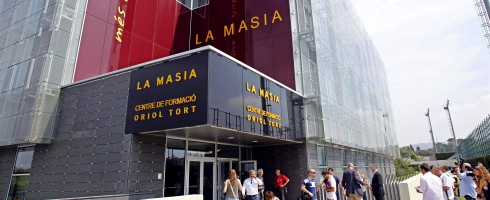Barcelona’s famed La Masia academy is often held up as a shining example of how a football club should mould its youngsters into not only fantastic footballers but well-rounded sporting individuals. However, the words of Barca B boss Jordi Vinyals this week are sure to trigger a note of alarm within the corridors of the Camp Nou.
“I think that as a whole the values at La Masia have been in decline and maybe we have a group that embodies the breakdown of some values that have been slipping away, values that we hope will return,” remarked Vinyals.
“Certain behaviour is allowed to persist and certain things go unchecked until the situation deteriorates to the point the players think they are bigger than the club, although the club is more important than any of us here. But we are all to blame.”
The 51-year-old, a youth Coach at the club since 2012, only took over the second string on February 9 this year, replacing Eusebio Sacristan after a poor run of results, but his comments are particularly worrying, not only for the Blaugrana but the whole of Spanish football.
Taking its name from a traditional type of Catalan farmhouse, the original La Masia building is situated next to Camp Nou and in 1979 was converted to house young players brought to the club from outside Barcelona. There was a kitchen, a dining room, a recreation room and a library, as well as bedrooms, bathrooms and dressing rooms, but it was all a far cry from what today’s hopefuls take for granted.
The idea was to create a football philosophy from an early age that, married to the talent of local players, was based on a mentality and technical ability on the pitch that would run through the club from bottom to top.
It was also a place where the pupils were encouraged to further their education and combine learning with the demands of top-level sport; studying for a university degree was now seen as something to aim for, while in addition they were taught the values of humility, order, discipline, responsibility and solidarity.
It was an initiative that would bear fruit as before long it had overtaken the renowned Ajax academy as football’s foremost production line, with over 1,000 boys trying out each year for admittance, while it was also where a 13-year-old Pep Guardiola came to learn about the game and Lionel Messi developed into arguably the greatest footballer ever.
Guardiola’s success as Barca boss in later years was owed in no small measure to other players who had come through the system: Xavi Hernandez, Gerard Pique, Carles Puyol, Andres Iniesta, Sergio Busquets, Pedro Rodriguez and goalkeeper Victor Valdes were all schooled there, going on to play a part in not only Barcelona’s subsequent achievements but also the Spanish national team’s.
It was not the stature of the players or how they lined up but the manner in which they played the game that was the key, showing a telepathic understanding on the pitch that had been honed by their growing up together. Of all the great sides over the years, it was no coincidence that Guardiola’s team revolutionised the way the game was played like possibly no other since the Hungary team of the 1950s.
As a result it racked up 14 trophies from 2008 comprising of two Champions Leagues, three La Liga crowns, two European Supercups, three Spanish Supercups, two Copa del Reys and two FIFA Club World Cups. Indeed, in 2010 three La Masia graduates – Messi, Iniesta and Xavi – filled the top three places in the voting for the Ballon d’Or.
However, in June 2011 the Masia building ceased to house the youth players and its doors were finally closed, with the Ciutat Esportiva Joan Gamper – situated in the north of the city and where the first team players had trained since 2009 – becoming its new headquarters. The facilities are impressive, spanning an area of around 6,000 square metres and having room for 120 athletes – half of them footballers – as well as space for leisure activities and other hobbies.
Since its opening, Barcelona has still seen the emergence of several youngsters, with the likes of Martin Montoya, Marc Bartra, Munir El-Haddadi, Rafinha, Sergi Roberto, Gerard Deulofeu and Cristian Tello all making into the first team. Even so, none has yet cemented a regular place in the starting line-up and doubts are beginning to be raised as to whether today’s graduates have received too much too soon in the way of financial reward.
It is a question club President Josep Maria Bartomeu admitted he was aware of when he responded to Vinyal’s observations.
“I know why he said what he did and I respect his message,” maintained Bartomeu, who this season has seen the Barca B team slump to second-bottom of La Segunda with just three wins from the last 22 games. The contrast with Luis Enrique’s first team could not be starker and the oft-praised ‘quarry’ appears to have lost the level it has been at for the past few years.
While it is okay to respect someone’s opinion, the reality is that there are now rumblings of discontent among the club’s ‘socios’ as they wait to see if anything will be done about it before Barca’s perceived cloak of invincibility is in danger of slipping.

